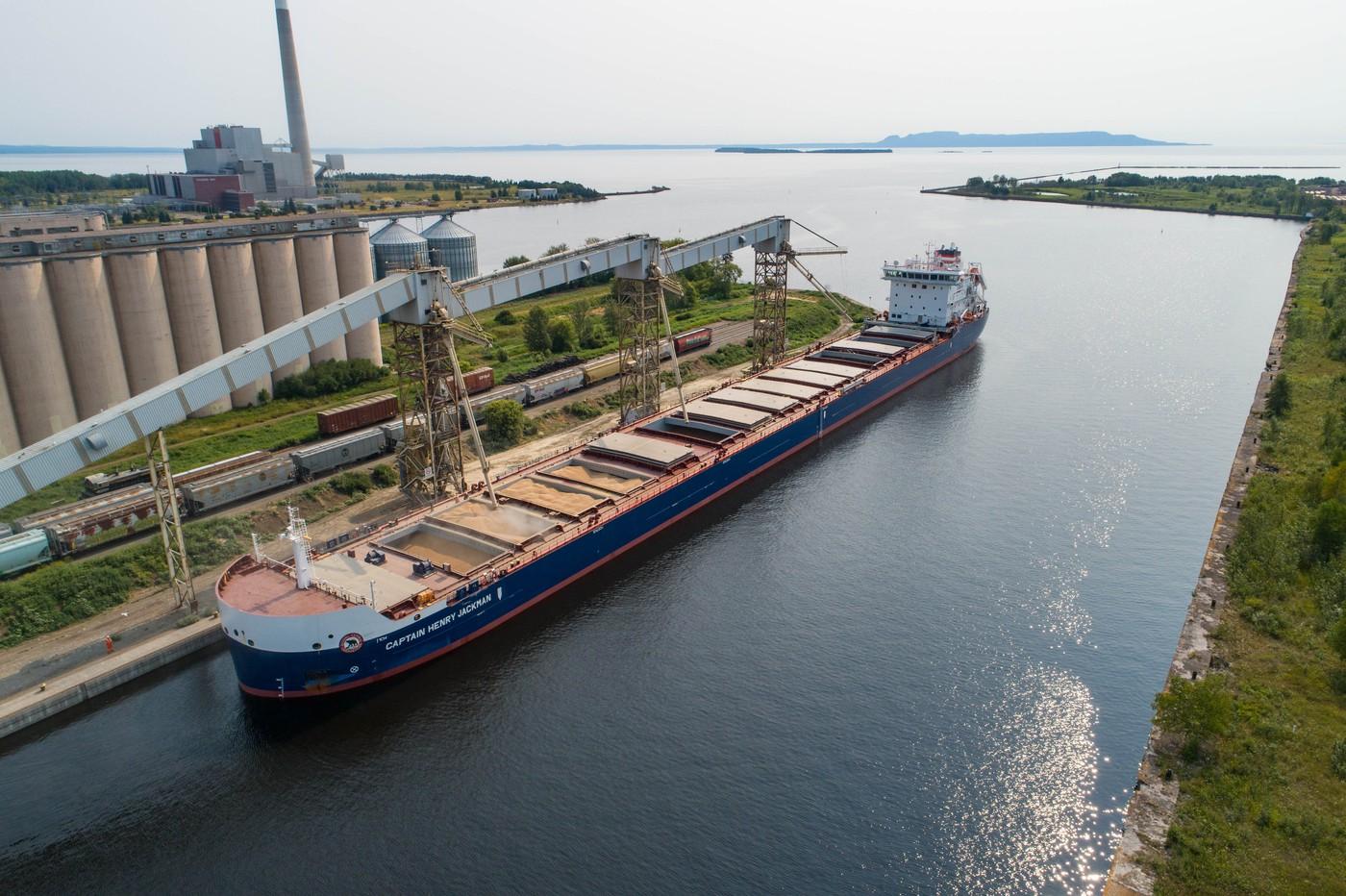
The new Canadian-flagged Captain Henry Jackman is not only setting cargo-carrying records but also produces 35% fewer carbon emissions per tonne-kilometre compared to its predecessor.
The newest addition to Canada’s domestic shipping fleet is already setting records.
The dry-bulk carrier, the Captain Henry Jackman, joined Algoma Central Corporation’s fleet this summer as its most efficient vessel.
The ship’s design, described as “Equinox 3.0”, is an evolution of the original eco-ship Equinox Class that St. Catharines-based Algoma created to renew its fleet over the past 10 years, incorporating improvements in cargo deadweight capacity and equipment while maintaining the numerous performance efficiencies of the original design.
With a life expectancy on the Great Lakes of 35-40 years, the Captain Henry Jackman is an important long-term investment for the Great Lakes – St. Lawrence waterway.
Compared to the vessel she is replacing, the Captain Henry Jackman will carry 25% more cargo while consuming 10% less fuel, rendering a greenhouse gas per tonne-km improvement of approximately 35%. This enhances the vessel’s advantage in minimizing green house gas emissions when compared to competing transportation modes.
New record for grain load size in Port of Thunder Bay
With her improved design, the Captain Henry Jackman set a new record cargo size for grain loaded at the Port of Thunder Bay (31,100 Metric Tonnes) on her very first voyage.
The cargo, Canadian Western Red Spring Wheat grown in southwestern Manitoba, is destined for international markets. The vessel was unloaded in Baie Comeau, Quebec where the grain was elevated in the customer’s transfer terminal, then loaded onto an ocean-going vessel bound for multiple countries in West Africa. There, local grains will be blended together with Canadian grains to create a higher quality grain, and milled to be made into bread.
Who is Captain Henry Jackman?
According to Jeff DeRosario, Algoma’s Vice President-Commercial, the vessel’s namesake, Captain Henry Jackman, immigrated to Huron County, Ontario from the United Kingdom, and in 1851 left the family farm in pursuit of work as a seafarer on the Great Lakes. From these humble beginnings, Captain Jackman went on to become a legendary schooner Captain owning a handful of vessels, and obtained his license as a Master of inland steamships when the age of sail was in full transition to that of steam in the 1870s.
Says DeRosario, “It is with considerable pride that his descendants, more than a century later, are able to name the newest, most efficient and innovative Equinox class vessel in his enduring honor.”
Algoma owns and operates the largest fleet of dry and liquid bulk carriers operating on the Great Lakes – St. Lawrence Seaway, including self-unloading dry-bulk carriers, gearless dry-bulk carriers, cement carriers and product tankers. Algoma also owns ocean self-unloading dry-bulk vessels operating in international markets and a 50% interest in NovaAlgoma, which owns and operates a diversified portfolio of dry-bulk fleets serving customers internationally.